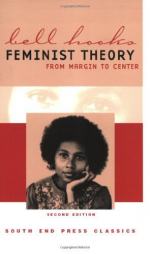
|
| Name: _________________________ | Period: ___________________ |
This quiz consists of 5 multiple choice and 5 short answer questions through Chapter 12.
Multiple Choice Questions
1. Following the author's reasoning, what does a societal trend towards women identifying with and pursuing male models of power show?
(a) That women lack the ability to develop their own models.
(b) That women are just as capable as men.
(c) It does not really show us anything one way or the other.
(d) That women do not necessarily experience and wield power differently from men.
2. For the author, which two main terms had been left out of feminist discussions when she first published her book?
(a) Race and class.
(b) Class and marital status.
(c) Genetics and the role of the family.
(d) Gender and race.
3. In the Preface to the second edition (2000), how does the author characterize the later reception of her work?
(a) Many people embrace her ideas but do not give her any credit for them.
(b) The people who first rejected the book came to regard the author's innovations as necessary and valuable.
(c) Women of color still feel that the author does not address their concerns.
(d) Male academics find the work too exclusive.
4. How is violence often represented in western culture?
(a) As sexually titillating, and even associated with love and romance.
(b) As reprehensible, no matter who commits it.
(c) As a symbol of life.
(d) As something only practiced by villains.
5. How does the author view women's desires and attempts to be like white men?
(a) She disagrees strongly with this definition of feminism because it sustains the current patriarchal system.
(b) She thinks that it is acceptable for white women but not for black women.
(c) She refrains from commenting because she doesn't want to appear judgmental.
(d) She believes that it is the only way fro women to gain credibility and power in society.
Short Answer Questions
1. Overall, what does the author think about the effects of the feminist movement?
2. Overall, what is the author's approach to presenting feminist ideas in this book?
3. According to the author, how has the relationship between feminism and the family often been portrayed?
4. Related to the issue of feminist writing, between which two groups does the author notice tension in the greater feminist movement?
5. What notion about women and power do both sexist and traditional feminist culture share?
|
This section contains 565 words (approx. 2 pages at 300 words per page) |

|




